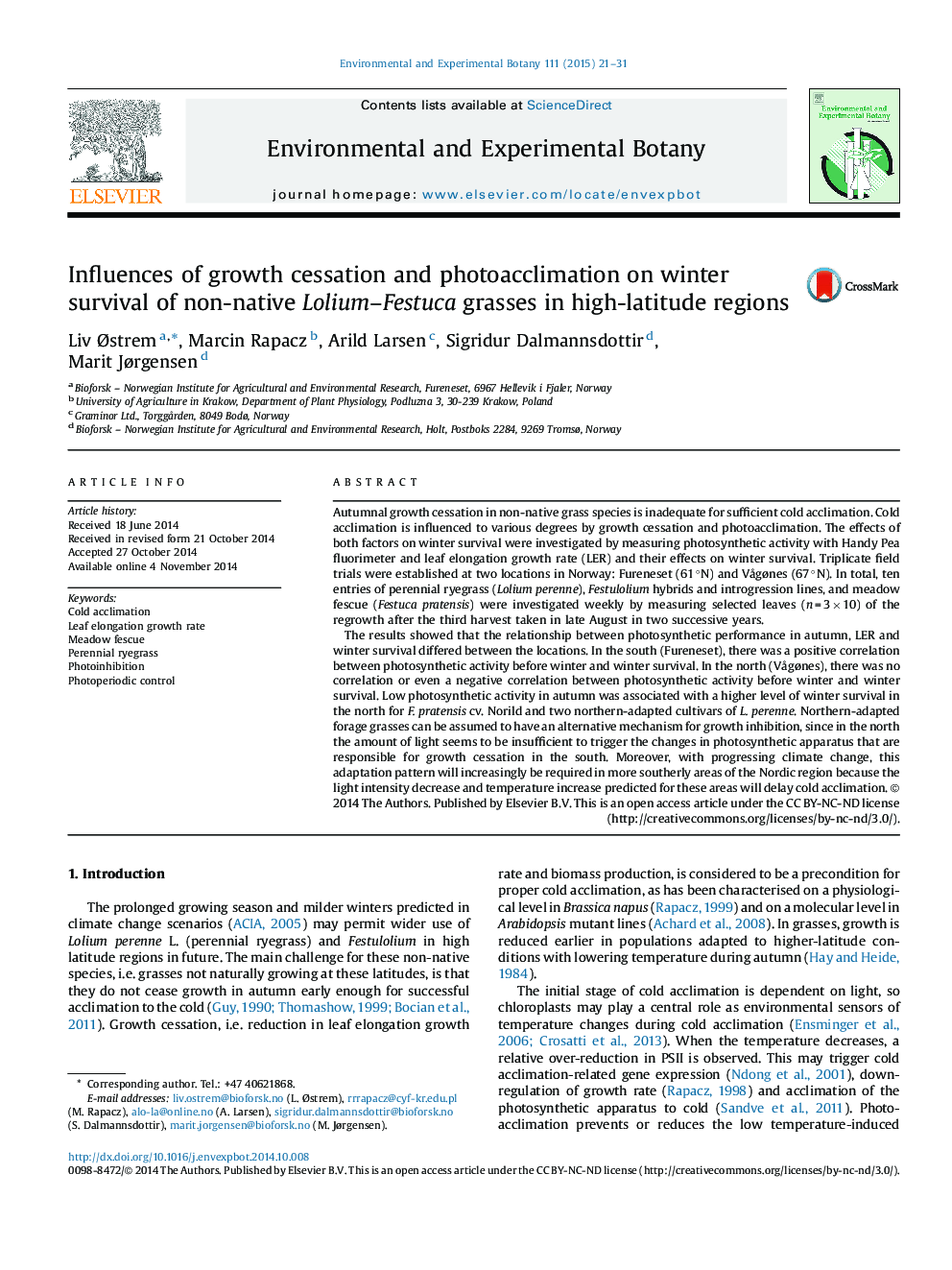| Article ID | Journal | Published Year | Pages | File Type |
|---|---|---|---|---|
| 6388839 | Environmental and Experimental Botany | 2015 | 11 Pages |
â¢Autumnal leaf growth, PSII activity and winter survival differed at 61°N and 67°N.â¢Low light level limited leaf elongation growth in the north (67°N).â¢Growth cessation in adapted Festuca pratensis was faster than in non-native species.â¢Winter hardening depends more on photoperiodic control in future northern climate
Autumnal growth cessation in non-native grass species is inadequate for sufficient cold acclimation. Cold acclimation is influenced to various degrees by growth cessation and photoacclimation. The effects of both factors on winter survival were investigated by measuring photosynthetic activity with Handy Pea fluorimeter and leaf elongation growth rate (LER) and their effects on winter survival. Triplicate field trials were established at two locations in Norway: Fureneset (61 °N) and VÃ¥gønes (67 °N). In total, ten entries of perennial ryegrass (Lolium perenne), Festulolium hybrids and introgression lines, and meadow fescue (Festuca pratensis) were investigated weekly by measuring selected leaves (n = 3 Ã 10) of the regrowth after the third harvest taken in late August in two successive years.The results showed that the relationship between photosynthetic performance in autumn, LER and winter survival differed between the locations. In the south (Fureneset), there was a positive correlation between photosynthetic activity before winter and winter survival. In the north (VÃ¥gønes), there was no correlation or even a negative correlation between photosynthetic activity before winter and winter survival. Low photosynthetic activity in autumn was associated with a higher level of winter survival in the north for F. pratensis cv. Norild and two northern-adapted cultivars of L. perenne. Northern-adapted forage grasses can be assumed to have an alternative mechanism for growth inhibition, since in the north the amount of light seems to be insufficient to trigger the changes in photosynthetic apparatus that are responsible for growth cessation in the south. Moreover, with progressing climate change, this adaptation pattern will increasingly be required in more southerly areas of the Nordic region because the light intensity decrease and temperature increase predicted for these areas will delay cold acclimation.
